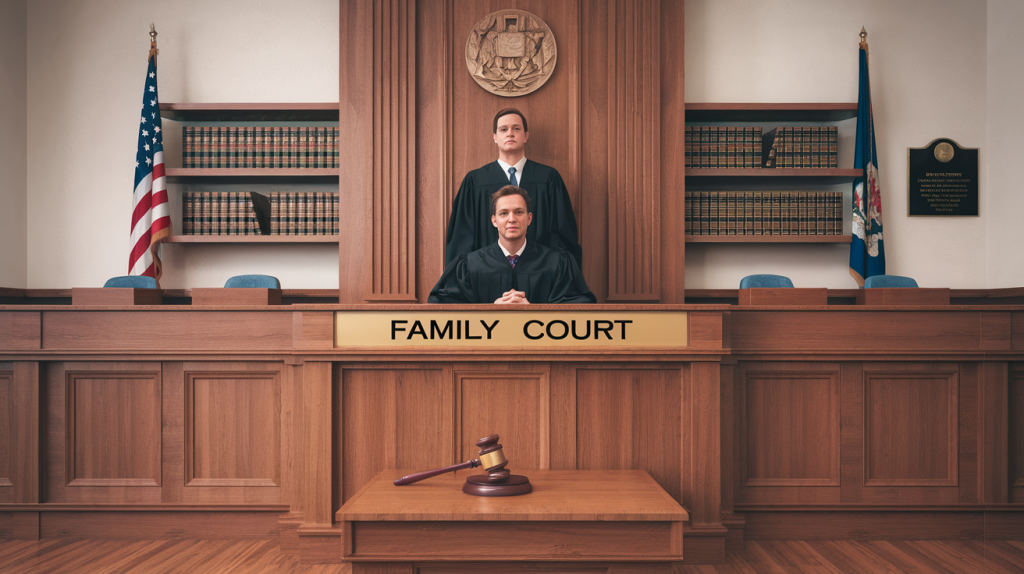Are you worried about a family court decision that didn’t go your way? A judge’s ruling can turn life upside down. You might feel stuck, thinking there’s no way to change the outcome.
But here’s the good news: family court decisions aren’t always final. Legal options exist to challenge these decisions through proper channels.
This article explains who has the power to change a family court judge’s ruling. You can learn about appeal processes, higher courts, and practical steps to take when disagreeing with a court decision.
What is the Role of a Family Court Judge

A family court judge makes decisions in cases involving family matters. These judges work in special courts that handle issues such as divorce, child custody, and adoption.
Family court judges must have a law degree and years of legal experience. Most states require them to have worked as lawyers for at least 10 years.
A family court judge makes important choices that affect parents, children, and relatives daily.
Their main job involves listening to both sides of a case and making fair choices based on state laws. When parents cannot agree on custody arrangements, the judge prioritizes the child’s needs.
Family Court Judges Must
- Study all facts and documents presented in court
- Listen to testimony from all involved parties
- Apply state laws to each specific case
- Write clear orders explaining their decisions
- Make sure everyone follows court rules
Each ruling comes after carefully reviewing evidence and considering legal guidelines. The judge’s decisions become binding court orders that all parties must follow.
Who Can Overrule a Family Court Judge
Family court orders aren’t always final. Let’s examine who can modify or overrule a family court judge’s ruling.
1. Appeals Court Judges
Appeal court judges can change a family court decision if they find mistakes. Here’s what you need to know.
You Must Show One of These
- The family judge did not follow the law
- The judge made clear mistakes with facts
- You did not get a fair hearing
The appeal judges read all case papers. They don’t hear new evidence or start over. If they find problems, they can:
- Change the decision
- Send the case back to family court
- Ask the family judge to fix specific issues
Remember: Appeal judges rarely change family court choices. They usually support what family judges decide.
2. Supreme Court
The Supreme Court can change a family court judge’s decision, but this doesn’t happen often. Some of the key steps are:
You must first appeal to your state’s higher courts. You can ask the Supreme Court to examine your case if they say no.
They only Take Cases That
- Show the family court made clear legal mistakes
- Deal with basic rights
- It matters to many other families
The Supreme Court will read the case files from the family court. If they find the family judge did not follow the law correctly, they can change the ruling.
Most family cases stay in state courts. The Supreme Court picks only a few cases annually that could affect family laws nationwide.
3. New Family Court Judge
A new family court judge can change an old ruling, but they need good reasons. The basics are given below,
You Can Ask for a New Review When
- You find new facts that weren’t known before
- Your family situation has changed since the last ruling
- The first judge made a clear legal mistake
The New Judge Will
- Look at your proof of changes
- Read the old case files
- Make sure the change helps your family
Remember: The new judge needs real reasons to change the old decision. They can’t change it just because they think differently.
How The Appeals Process Works

When you lose a case in court, you can ask a higher court to look at it again. This is what we call an appeal. The steps of the Appeal are given below:
- The first step starts when your lawyer files papers with the appeals court. These papers tell the court why the first decision was wrong. They must file these within strict time limits.
- In the second step, your lawyer gets the records from your first trial. These include what people said in court and what evidence they showed. Your lawyer reads all this to find mistakes that could help your case.
- The third step is writing a brief. This is a document that explains your side of the story. It points out specific errors from the first trial. The other side also writes a brief to defend the first decision.
Sometimes, lawyers go to the appeals court to speak to the judges. They answer questions about the case. But not every appeal has this step. Many appeals end with judges just reading the papers.
The judges then meet to talk about your case. They look at the first trial’s decision and check if the judge made any big mistakes. This can take weeks or even months.
Finally, the appeals court makes its choice. They might:
- Keep the first decision
- Change part or all of it
- Send the case back to the first court to try again
Key Methods of Challenging Judge’s Authority
There are several methods through which a family court judge’s authority can be challenged, depending on the situation. Here are the primary ways:
-
Appeal: If a party disagrees with a judge’s decision, they can appeal to a higher court. The appeal must be based on legal errors, such as incorrect application of the law or procedural mistakes.
-
Motion for Reconsideration: A party can request the same judge to reconsider their ruling, presenting new evidence or arguing that the decision was based on a misunderstanding of facts.
-
Recusal: If a party believes the judge has a conflict of interest or bias, they can file a motion asking the judge to recuse themselves from the case.
-
Judicial Review: In some cases, parties may seek judicial review, asking a higher court to examine whether the judge acted within their legal authority.
Major Steps to Take When Contesting a Court Ruling

- Contact Legal Counsel Promptly: Tell your attorney which parts of the decision seem incorrect. Make a list of key points before the meeting so that you can discuss them clearly.
- Request Court Documents: Get the court clerk’s written decision and hearing transcript. These papers help lawyers check the judge’s reasoning for possible errors.
- Watch the Calendar: States set firm deadlines for filing challenges to court decisions. Most allow 30 days or less to submit paperwork. Late filings often mean losing appeal rights.
- Document Your Position: Keep clear notes about disagreements with specific parts of the ruling. Include dates and facts that support your view. Share these details with your lawyer.
- Get Another Legal View: A second family law attorney may notice different aspects of the case. Their fresh perspective could bring new insights to light.
- Follow Current Orders: Attend all court dates and stick to existing orders during the appeal process. This approach shows respect for legal procedures.
Certain Limitations and Considerations to Look After
A higher court can review and change what a family court judge decides. This happens when someone asks for an appeal, and the appeals court examines the case again to check if the judge made any mistakes.
Here’s What to Know About This Process
State appeals courts hold the main power to check family court decisions. They look at the papers from your case and read what the judge has written. It’s worth noting that appeals courts don’t usually change small choices; instead, they focus on big errors in how the judge used the law.
For example, if the judge didn’t follow state rules about child support, that could lead to a change.
Remember that you must file your appeal within the time limit. Each state has its own rules about this. Most give you 30 days after the judge’s decision.
The state supreme court might also look at your case, but they pick only a few cases each year. They usually choose instances that could help fix problems in how courts work.
Conclusion
Family court decisions shape real lives, and knowing about appeal options helps protect your rights. When a judge judges, higher courts can review and change these choices when legal mistakes occur.
Appeals courts serve as watchdogs over family court decisions. They ensure judges follow the law and make fair choices for good reasons. While changing a ruling takes work and time, the system exists to fix serious legal errors.
Talk to a lawyer about appeals if you think a family court judge made the wrong call. They can examine your case and tell you if an appeal makes sense.
Remember that quick action matters – appeal times have strict deadlines.








